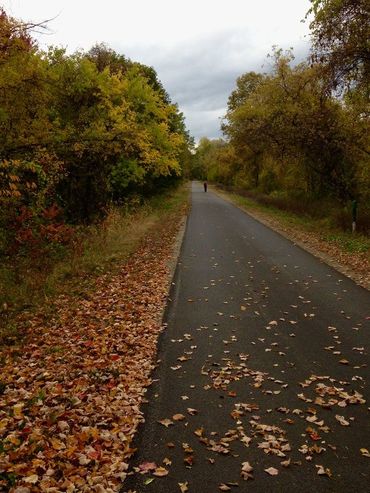|
How many thoughts are you juggling in your head right this moment? How many times have you had your train of thought interrupted just in the last hour? The pace of distraction has risen even faster than the pace of life, and we’re all feeling the effects: overwhelm and mental fatigue, inefficiency, anxiety, and a sense of having lost touch with yourself under the load of details you are trying to keep track of.
Some amazing statistics, in a Tedtalk by Manoush Zomorodi, put our current distraction level into perspective. How many times a day do you think you check your email? The average count is 74! What’s more, the average number of times a person working at a computer switches tasks during the day is 566. This has changed drastically over time, according to Zomorodi: 10 years ago it was normal for people to shift their attention every 3 minutes in the workplace, but now it is every 45 seconds. No wonder we feel exhausted! She quotes neuroscientist, Daniel Levitin, who points out that we are “depleting neural resources”—actually using up nutrients in our brain—when we constantly shift attention like this. It is tough to just maintain basic well-being, let alone replenish your coping resources, and cultivate a rich internal life, when you change focus non-stop. That’s why meditation practices can be so powerful: just stopping, breathing, and slowing down the mind is a return to “home base” for your whole nervous system. Other great tools for breaking out of the attention-shifting rat-race are insight writing practices, such as values-affirmation writing, Proprioceptive Writing, and the HeartMath “Cut-Through” method for transforming anxiety. Offering varying degrees of structure, these simple methods allow you to focus, delve into your feelings, and follow your thoughts through to new perspectives and insights. You’ll find solutions, strengths, and inspiration await you when you take up a pen and paper and dedicate a few minutes to a single activity! You’ll also find that these methods can work almost like a detox or a cleanse. Over time, you unburden yourself from the negative material you’ve “stored” in your mind, and you begin to feel lighter. And, like the research on meditation, the evidence is strong for the positive impact on stress hormones. For example, the Cut-Through technique has been shown to reduce the stress hormone, cortisol, by 23%, while raising the helpful hormone, DHEA, by 100% when practiced for 30 days (Childre & Rozman, Transforming Anxiety, 89). These writing techniques are easy to learn, and have come to my rescue countless times! I’ll be sharing them in my upcoming Energize Your Writing Workshop, called “MInd-Body Methods to Catalyze Creative Breakthroughs,” which combines Eden Energy Medicine techniques with these great writing practices. Why don’t you bring a friend, and join us on July 29, from 7-8:30 pm? Please contact me to register! ($15 registration fee)
0 Comments
Have you ever gone out in strong wind and later gotten a headache? Developed a jaw or neck ache after your ears got too cold? Chances are, you have experienced what Chinese medicine regards as a "Wind Invasion." The Wind, along with Damp, Dry, Cold, and Heat, are all considered harsh climate factors that can invade the system and create all kinds of discomfort. Writing about it in Chinese Medicine for Maximum Immunity, acupuncturist Jason Elias explains how Wind is sometimes referred to as "the Chariot for One Hundred and One Evils," as it is believed to ride in through points--especially on the head, neck, and shoulders--"just as wind finds its way into a house through cracks in windows and doors" (173-4). Usually associated with the external environment, Wind issues can sometimes also arise from internal imbalances. Donna Eden has identified several other places, such as the low back, the palms and soles of feet, and special points on Liver and Large Intestine meridians, on the feet and hands, where Wind, Damp, Heat, Dry, and Cold can sneak in. Contributing to everything from muscle soreness and spasms, to sweating, to chills, to sinus, skin and joint problems, Wind and the other four conditions can make you feel bad in a hurry. In fact, one sign that you've been invaded is that you start to feel crummy very rapidly, and for no readily apparent reason. Until you look more closely at what you've been "weathering." This happened to me in the fall, when I rode my bike to work on the first very cold day. My ears were freezing by the time I got there, and within a couple of hours, I felt like I was coming down with something. I was foggy headed, my energy was lagging, and I felt miserable all over. Then I realized--duh--better check my Wind points. Every one of them was out of balance. Getting them back in balance made me feel much better, very quickly. The only other time I've had such an extreme experience was after flying. I got off the plane and began to feel toxic, with a dull headache and a sense of dread that I was about to be ill. Ironically, I had been on my way to an Energy Medicine class, and fortunately for me, our first lesson was about the Wind points. When we checked, they were all blown out, and fixing them basically fixed me! Learning to work with Wind points can help you immensely this time of year. I've made the video below, so you can follow along for a quick and easy process of clearing and sealing up these potentially drafty points. And don't forget to wear your scarf and hat! Solstice Meditation for Banishing the Winter Blues Solstice, Gateway to the Sun As we approach the longest night of the year, we can be cheered by the prospect of enjoying a few more minutes of light each day afterwards. The Winter Solstice is our gateway into the return of the sun. That still leaves a lot of darkness between now and spring, and many people struggle with this lack of sunlight. Finding moments to enjoy sunrise or sunset can be a nice way to honor this time of year, and helps us reconnect with the cycles of nature. Sun tracking may not always fit our schedules, which are often already jam-packed during the holiday season. Plus, in my part of the country, overcast skies also contribute to our yearning for the sun. When covered by clouds, it is hard to tell whether the sun is even on the move! Healthy Candlelight This is where fireplaces and candles can have a helpful role. People in far northern countries wouldn’t dream of going through the winter without a supply of candles. They keep candles lit throughout the house, not just when entertaining, but simply to sustain their spirits. Of course, we need to exercise good fire safety practices while keeping candles burning. For example, during a power outage in my house years ago, a badly placed candle flared up and actually set a toothbrush on fire. Toothbrush fumes are really nasty! Speaking of fumes, choose your candles with care, looking for clean options with unleaded wicks. Cheap, foreign-made candles often contain lead and other metals, which can pollute your home. Avoid scented candles, as well, because they are liable to emit toxic fumes from synthetic chemicals. Even some that are made with essential oils may contain undesirable fixative chemicals (see “Are Your Candles Emitting Toxins?” on the Global Healing Center website for more). Your best bet are beeswax or soy candles, that clearly state what their wicks are made from. You may have to pay more for these choices, but it is definitely worth it in terms of indoor air quality. Himalayan Salt Lamps If candles just aren’t practical for your life circumstances, consider investing in a Himalayan Salt lamp or two. Their cheerful glow resembles firelight, and they don’t use much energy. Made of salt crystals, they exert a good influence in your environment: they are highly organized structures, capable of giving off healthy, negative ions when heated. Visualize Your Bioluminescent Self You can also celebrate light by doing an “inner light” meditation. You may have heard of bioluminescence—the ability of some organisms, such as fish and algae—to emit light. Well, it turns out we are also mildly bioluminescent, just not visibly so. I find this inspiring during the darkest seasons. We can expand on this understanding, to visualize ourselves as light beings, whenever we wish to shift our emotional and mental states. Any time we engage our imaginations, we also activate energies called the Extraordinary Flows, or Radiant Circuits, which contribute to our ability to experience joy, playfulness, and spontaneity. So, if you feel stuck in oncoming winter’s ice and darkness, or simply wish to amp up your inner light more, try out the following meditation. How often are you running on "automatic"? We all rely on our ability to carry out basic tasks like driving a familiar route, while our minds are busy planning next steps or working out problems. With ever-mounting commitments and packed schedules, more and more of us are spending a great deal of our time in this automatic pilot mode. But how long can we sustain this--our bodies engaged with actions in real time, while our minds flit from issue to issue--without creating a deep disconnect? In this splitting of our awareness, we may think we are simply being efficient. But the nervous system feels otherwise, and the energy system responds by rerouting power away from our Radiant Circuitry, Like the meridians, the Radiant Circuits each carry out specific physical, emotional, mental, and spiritual tasks. But they also have a special, "on-call" status, that allows them to travel around the body when needed. The ability to feel joy in the present moment is one of their most brilliant contributions to our well-being. But when we are too stressed, too desperately task-oriented, it is as if many of these energies have gone dormant. That's when whole chunks of our experience, of our world, begin to take on the character of mere "backdrops" to our to-do lists. If this dormant state persists, it can lead to a sense that life has become lackluster, too full of obligations that don't have enough meaning on their own to feed our soul. This "backdrop syndrome" most often comes to my attention when I'm driving. If I have to remind myself to notice the surrounding landscape, it means my destination-orientation has taken over. The mind is out ahead of the body like a kite in a strong wind. As a child, I spent hours in woods and fields, immersed in the sights, smells, and sensations, along with my dog and pony companions. I even tried to maintain that connection to the land as a car passenger on long trips. Looking out the window, I imagined that I was on horseback, riding through whatever terrain we passed. These joyful interactions with nature--even the imagined parts--are Radiant Circuit activities, and boost those energies. Yes, adult responsibilities can dampen your spirits, but with intention and attention, you can re-awaken your Radiant Circuits. Imagine a spectrum, with survival mode on one side, and joyful, radiant mode on the other. If you find yourself experiencing your surroundings, not as three dimensional, but only as a backdrop to whatever goal you are working toward, it's a sign you need to move the needle. The Radiant tracing exercise I demonstrate in the video below can help with that. So can a number of other fun approaches that I would be happy to share with you in my energy classes or in individual sessions. |
Energize
|



 RSS Feed
RSS Feed